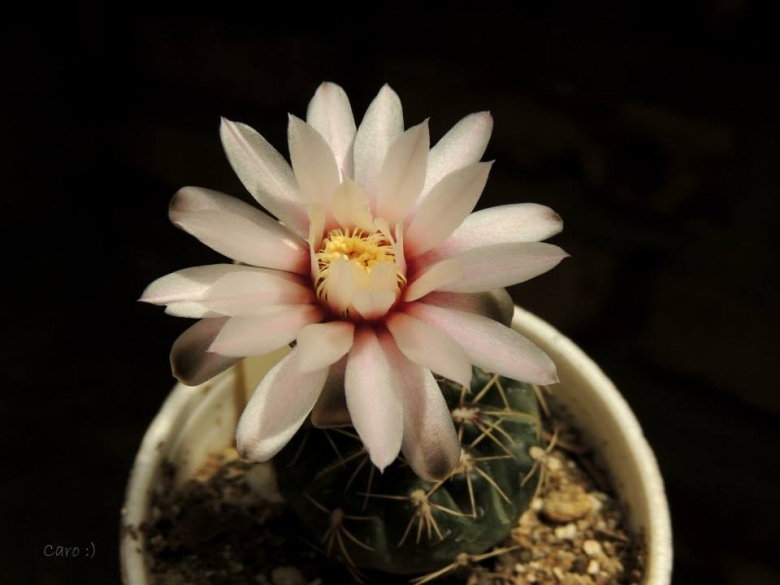
Gymnocalycium amerhauseri Photo by: Carolina González
Origin and Habitat: Northwestern Argentine province of prov. Córdoba. This species is known only from the Sierras Chicas range and a few adjacent areas and can be considered a microendemic species. The species is known from only one population, where it is not very abundant, and the estimated population size is not more than 250 individuals.
Altitude: Mostly between 1450-1600 meters above sea level.
Habitat and Ecology: It occurs in the higher regions of the mountains, in grasslands. There are no major threats, however it can be affected by the occasional fire. A potential threat is tourism development in the area.
Synonyms:
See all synonyms of Gymnocalycium amerhauseri
Description: Gymnocalycium amerhauseri is a small single headed, flattened cactus, with peculiar dark green bodies with short adpressed spines in spider-like clusters. Two subspecies are recognized, the nominate form and Gymnocalycium amerhauseri subsp. altagraciense H.Till & Amerh. however subsp. altagraciense is considered to be a synonym by Charles.
Habit: It is a geophyte stem succulent plant usually solitary and barely rising above ground level with a swollen underground root system.
Stem: Flattened spherical to spherical, plump, glossy dark green, bluish green or greyish-green, up to 2,5 cm tall, 5-6 cm in diameter.
Ribs: Mostly 8 rounded and tuberculate.
Spines: Oval, initially covered with yellowish white wool, becoming naked as they olden.
Central spines: At first absent or one only in adult specimens 1,2 -1,4 cm long.
Radial spines: The 5-6, radiating, straight to slightly backward curved 6-12 mm long, white with a darker brownish-red base.
Flowers: Near the apex, funnel-shaped, creamy white to pale pink up to 3 centimetres at anthesis. Throat reddish. Scales green, bordered pinkish-white.
Flowering time: Blooms appear recurrently from June to autumn. It flowers quite readily as a young seedling.
Fruits: Dark green, oval to spindle-shaped, about 3,3 cm long and up to 1,9 cm in diameter.
Taxonomy note: The species is doubtfully distinct from Gymnocalycium erinaceum J.G.Lamb. It is very likely that the species will be merged with G. erinaceum.
Subspecies, varieties, forms and cultivars of plants belonging to the Gymnocalycium amerhauseri group
Bibliography: Major references and further lectures
1) Cactus and Succulent Journal - Volume 78, Number 1-6 2006 - Page 229
2) Gymnocalycium - Volume 7, Number 3, 1994 - Page 131–134.
3) Edward Anderson “The Cactus family” Timber Press, Incorporated, 2001
4) James Cullen, Sabina G. Knees, H. Suzanne Cubey "The European Garden Flora Flowering Plants: A Manual for the Identification of Plants Cultivated in Europe, Both Out-of-Doors and Under Glass" Cambridge University Press, 11/Aug/2011
5) David R Hunt; Nigel P Taylor; Graham Charles; International Cactaceae Systematics Group. "The New Cactus Lexicon" dh books, 2006
6) Eggli, Urs; Newton, Leonard E. (2004) "Etymological Dictionary of Succulent Plant Names". Springer.
7) Demaio, P. & Trevisson, M. 2013. Gymnocalycium amerhauseri. The IUCN Red List of Threatened Species. Version 2014.3. <www.iucnredlist.org>. Downloaded on 10 May 2015.
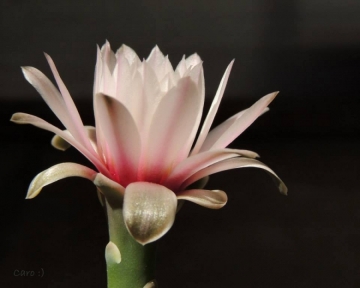 Gymnocalycium amerhauseri Photo by: Carolina González
Gymnocalycium amerhauseri Photo by: Carolina González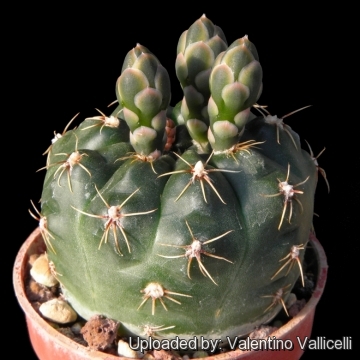 Gymnocalycium amerhauseri Photo by: Valentino Vallicelli
Gymnocalycium amerhauseri Photo by: Valentino Vallicelli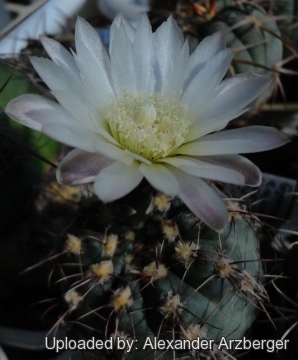 Gymnocalycium amerhauseri Photo by: Alexander Arzberger
Gymnocalycium amerhauseri Photo by: Alexander Arzberger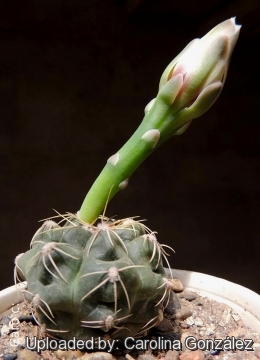 Gymnocalycium amerhauseri Photo by: Carolina González
Gymnocalycium amerhauseri Photo by: Carolina González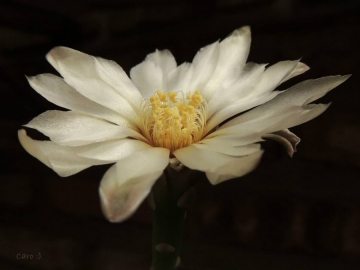 Gymnocalycium amerhauseri Photo by: Carolina González
Gymnocalycium amerhauseri Photo by: Carolina González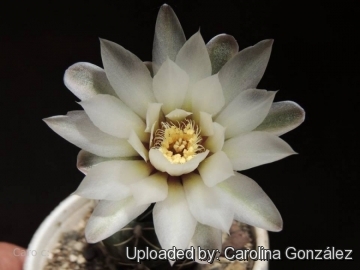 Gymnocalycium amerhauseri Photo by: Carolina González
Gymnocalycium amerhauseri Photo by: Carolina GonzálezCultivation and Propagation: Gymnocalycium amerhauseriSN|21451]]SN|21451]] is a summer grower species that is easy to cultivate.
Growth rate: It is a relatively rapidly growing and easily flowering species.
Soils: It likes very porous standard cactus mix soil. Prefer a low pH compost, avoid substrata rich in limestone; otherwise growth will stop altogether.
Repotting: This plant needs plenty of space for its roots, repotting should be done every other year or when the it has outgrown its pot. Use pot with good drainage.
Watering: Needs moderate to copious waterings in summer, but do not overwater (Rot prone), keep dry in winter at a minimum temperature of 0°C.
Fertilization: Feed with a high potassium fertilizer in summer.
Hardiness: Reputedly resistant to frost if kept on the dry side prior to, and during, cold weather (hardy to -12 C ° C, or less for short periods), but for safe cultivation it is best to avoid freezing temperatures.
Exposition: The plant tolerates extremely bright situations but enjoys filtered sunlight or afternoon shade, inside it needs bright light, and some direct sun. Tends to bronze in strong light, which encourages flowering and heavy spine production, but is likely to suffer from sun scorch or stunted growth if over exposed to direct sunlight during the hottest part of the day in summer.
Uses: It is an excellent plant for container growing. It always looks good and stays small. It look fine in a cold greenhouse and frame or outdoor in a rockery.
Pests & diseases: It may be attractive to a variety of insects, but plants in good condition should be nearly pest-free, particularly if they are grown in a mineral potting-mix, with good exposure and ventilation. Nonetheless, there are several pests to watch for:
- Red spiders: Red spiders may be effectively rubbed up by watering the plants from above.
- Mealy bugs: Mealy bugs occasionally develop aerial into the new growth among the wool with disfiguring results, but the worst types develop underground on the roots and are invisible except by their effects.
- Scales: Scales are rarely a problem.
- Rot: This species is particularly easy and accommodating, seldom suffer of cryptogamic diseases. Rot it is only a minor problem with gymnocalyciums if the plants are watered and “aired” correctly. If they are not, fungicides won't help all that much.
Propagation: Division, direct sow after last frost. Seeds germinate in 7-14 days at 21-27° C in spring, remove gradually the glass cover as soon the plants will be well rooted (ca 1-2 weeks) and keep ventilated, no full sun for young plants!
















